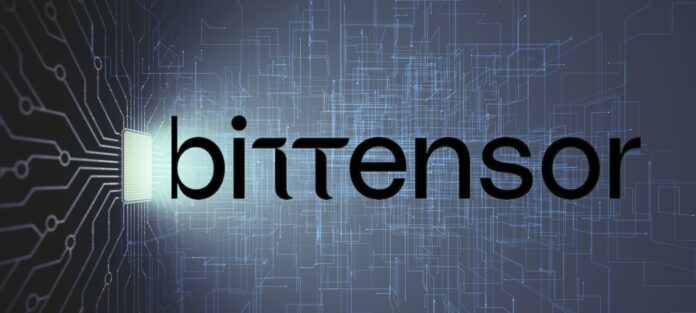The decentralized AI network Bittensor has found itself at the center of a major security breach, losing over $8 million worth of its native token TAO. In a detailed report, the project’s team has shed light on the root causes of this attack and the steps being taken to secure the network and stabilize the token’s price.
This incident, which occurred just a month after another $11 million wallet breach, has shaken the Bittensor community and raised questions about the project’s resilience and claims of decentralization. As the team works to restore normalcy, it has proposed a bold move – burning 10% of the TAO supply to stabilize the token’s value.
In this comprehensive article, we delve into the timeline of the attack, the technical vulnerabilities exploited, the immediate mitigation efforts, and the long-term security enhancements planned by the Bittensor team. We also explore the community’s reactions and the potential implications for the project’s future.
Bittensor Exploit: A Timeline of Events
The Bittensor hack unfolded on July 2nd, 2023, with the first signs of abnormal activity detected at 7:06 PM UTC. The team’s monitoring systems quickly picked up on the unusual transfer volume, prompting the establishment of a “war room” within 19 minutes to coordinate the response.
By 7:41 PM UTC, the Opentensor Foundation (OTF) team had taken decisive action, placing the Opentensor Chain Validators behind a firewall and activating “safe mode” on the Subtensor network. This effectively halted all transactions, allowing for a comprehensive analysis of the situation and preventing further losses.
Related Read: Holograph Hacked: A Billion-Token Heist and the Aftermath
Root Cause of Bittensor Hack: A Malicious PyPi Package
The investigation into the attack’s origins traced the vulnerability back to a malicious package uploaded to the PyPi Package Manager, version 6.12.2. This package, masquerading as a legitimate Bittensor file, contained code designed to steal users’ unencrypted coldkey details.
When unsuspecting Bittensor users downloaded and decrypted their coldkeys, the decrypted bytecode was automatically transmitted to a remote server controlled by the attacker. This breach compromised the security of those who had used Bittensor 6.12.2 and performed operations involving the decryption of hotkeys or coldkeys.
Immediate Mitigation and Security Measures
In the immediate aftermath of the attack, the OTF team acted swiftly to remove the malicious 6.12.2 package from the PyPi Package Manager repository. This crucial step prevented further compromise and limited the scope of the breach.
However, the team recognized the need for a more comprehensive security assessment to identify and address any other potential vulnerabilities. A thorough code review is currently underway, and the Bittensor network will gradually resume normal operations once the team is confident in the system’s integrity.
Related read: Ronin Network Hack Update: Norway Recovers $5.7 million in Stolen Crypto Assets
Compensating Affected Users
To address the financial impact on affected users, the Bittensor team has proposed a token burn, reducing the total TAO supply by 10%. This measure aims to stabilize the token’s price, which had plummeted by 15% following the incident, hitting a six-month low of $227.
Active voters participating in the burn proposal will be rewarded with compensatory DAO rewards at a later date, incentivizing community engagement and support for the project’s security efforts.
Community Reactions and Implications
The Bittensor hack has sparked a lively debate within the community, with some questioning the project’s claim of decentralization. Critics argue that the ability to pause the chain contradicts the principles of a decentralized AI network, while supporters believe the action was necessary to protect users’ assets.
Despite the severity of the attack, some validators, such as RoundTable 21, have confirmed that their delegators’ funds remained secure, suggesting that the exploit did not impact all users uniformly.
As Bittensor works to gradually resume normal operations, users are advised to create new wallets and transfer their funds once the blockchain is operational. Upgrading to the latest version of the software is also strongly recommended to ensure enhanced security.
Restoring Confidence and Securing the Future
The Bittensor team’s swift response and proposed security enhancements demonstrate their commitment to restoring confidence in the TAO ecosystem. The outcome of the token burn vote will be a crucial step in stabilizing the network and signaling the project’s resilience to the broader crypto community.
By addressing the root causes of the attack, implementing robust security measures, and fostering transparent communication, Bittensor aims to emerge from this incident as a stronger and more secure decentralized AI network. The community’s continued support and engagement will be essential in navigating this challenge and shaping the project’s long-term success.
Conclusion
The Bittensor hack has undoubtedly been a significant test for the decentralized AI network, exposing vulnerabilities and testing the resilience of its infrastructure. However, the project’s swift response, comprehensive reporting, and proactive security enhancements demonstrate a commitment to learning from this experience and fortifying the network against future threats.
As Bittensor navigates the aftermath of the attack and works to restore confidence in the TAO ecosystem, the broader crypto community will be watching closely. The project’s ability to overcome this challenge and emerge as a more secure and trusted platform will be a testament to its long-term viability and the promise of decentralized AI technologies.













